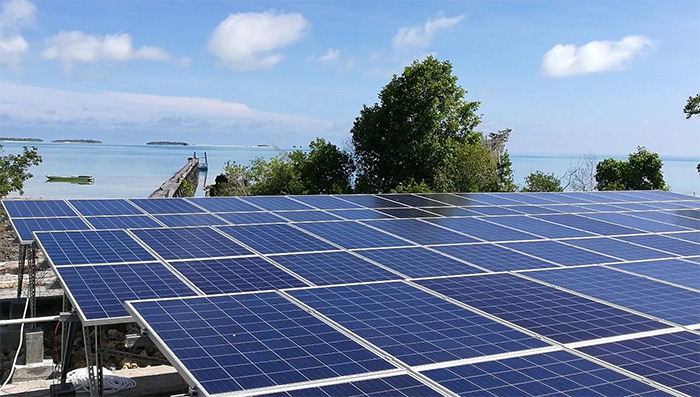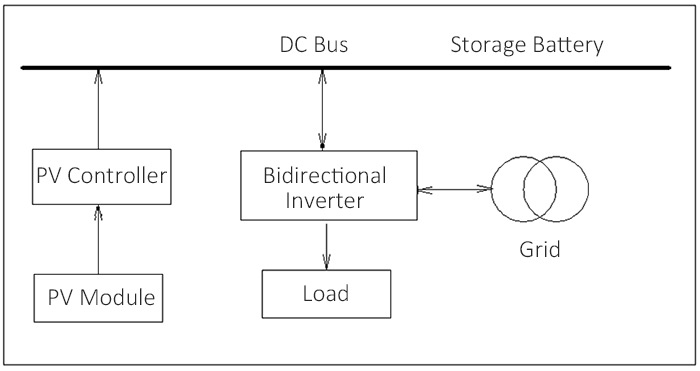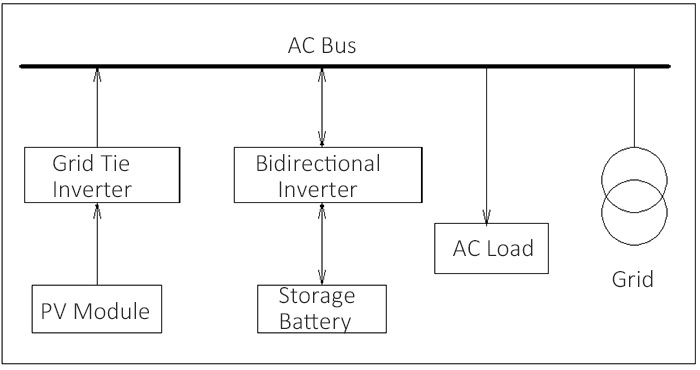In recent years, the PV power generation technology is advancing at an extremely high speed, and the installed capacity is increasing rapidly as well. However, the PV power generation has the disadvantages of intermittent and uncontrollable. Before the treatment, the large-scale direct access to the power grid will bring great impact and affect the stable operation of the power grid. Through increasing an energy storage process, the PV power generation can be smoothly and stably put into the power grid, and large-scale access to the power grid will not affect the stability of the power grid. Moreover, with the PV+ energy storage, the system will have a wider application scope.

The light storage system includes solar energy components, controllers, solar inverters, batteries, loads and other equipment. At present, there are many technical routes, but the energy needs to be gathered on a certain point. At present, there are mainly two kinds of topological structures: DC coupling and AC coupling.
DC Coupling
As shown in the diagram below, the DC power sent by the PV component is stored in the storage battery through the controller, and the grid can also charge the battery through the bidirectional DC-AC converter. The gathering point of energy is at the DC battery end.

The working principle of DC coupling: When the PV system is running, the battery is charged by the MPPT controller. When there is demand for the electrical load, the storage battery will release the power, and the current is determined by the load. The energy storage system is connected to the power grid. If the load is small and the battery is full, the PV system can supply power to the grid. When the load power is greater than the PV power, the grid and PV can simultaneously supply power to the load. Because the PV power generation and load power using are not stable, it depends on the battery to balance the system energy.
AC Coupling
As shown in the figure below, the DC power sent by the PV component is converted into AC power through the solar inverter, directly to the load or the grid. The grid can also charge the battery through the bidirectional DC-AC bidirectional converter. The gathering point of energy is at the communication end.

The working principle of AC coupling: Include the PV power supply system and storage battery power supply system. The PV system is constituted by a PV array and a grid-tie inverter. The battery system consists of a storage battery and a bidirectional inverter. These two systems can operate independently without interfering with each other, or they can be separated from the large power grid to form a microgrid system.
Both DC coupling and AC coupling are mature solutions, each with its own advantages and disadvantages. According to different applications, the most appropriate solution should be selected. The following is a comparison of the two solutions.
Cost comparison
DC coupling includes controllers, bidirectional inverters and switchers. AC coupling includes grid-tie inverters, bidirectional inverters and power distribution cabinets. From the perspective of the cost, the controller is cheaper than the grid-tie inverter, and the switcher is also cheaper than the power distribution cabinet. The DC coupling scheme can also be used to control the inverter integrated machine. The equipment cost and installation cost can be saved. Therefore, the DC coupling scheme is lower than the AC coupling scheme.
Applicability comparison
The DC coupling system, controller, battery, and solar inverter are connected in serial, with tight connections, but less flexibility. The AC coupling system, grid-tie inverter, battery and bidirectional inverter are parallel, with no tight connection but better flexibility. If it is necessary to install an energy storage system in an installed PV system, it is better to use the AC coupling. As long as the battery and the bidirectional converter are installed, it does not affect the original PV system, and the design of the energy storage system is not directly related to the PV system in principle and can be determined according to the needs. If it is a newly installed off-grid system, the PV, storage battery, and inverter should be designed according to the user's load power and power consumption, and it is more suitable to use the DC coupling system. However, the power of the DC coupling system is relatively low, generally less than 500 kW. The larger system is better controlled by AC coupling.
Efficiency comparison
From the perspective of the PV utilization efficiency, the two schemes have their own characteristics. If the user has more load during the day and less load at night, the AC coupling is better. The PV module directly supplies power to the load through the grid-tie inverter, and the efficiency can reach as high as 96%. If the user has less load during the day and more load at night, the PV power generated during the day time needs to be stored and reused during the day. In such condition, it is better to use DC coupling. The PV component stores electricity to the battery through the controller, and the efficiency can reach 95% or more. If it is the AC coupling, the PV must firstly be converted into AC current through the solar inverter, and then converted into DC through the bidirectional converter, and the efficiency will drop to around 90%.
